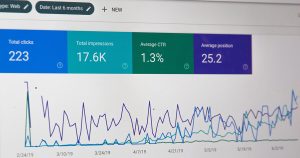Contents
Introduction
As users navigate the vast landscape of the internet, their devices communicate with websites through a fundamental component known as the User Agent. Operating silently in the background, the User Agent plays a crucial role in tailoring web experiences based on device capabilities and preferences. In this comprehensive exploration, we delve into the mechanics behind User Agents, unraveling how they facilitate seamless interactions between users and websites.
Understanding User Agents
The User Agent serves as a communicator between a user’s device and the web server. It is a string of information embedded in the headers of an HTTP request, providing details about the device, browser, and operating system used by the visitor. This information is invaluable for web developers and site administrators, as it enables the optimization of content and functionality based on the characteristics of the user’s environment.
Components of a User Agent String
A typical User Agent string comprises several key components:
- Browser Information: Indicates the name and version of the web browser being used (e.g., Chrome, Firefox, Safari).
- Operating System: Specifies the operating system running on the user’s device (e.g., Windows, macOS, Android, iOS).
- Device Type: Identifies the type of device, such as a desktop computer, smartphone, tablet, or smart TV.
- Rendering Engine: Describes the underlying software responsible for rendering web content (e.g., Blink for Chrome, Gecko for Firefox).
- Additional Information: May include other details like language preferences, plugins, and more.
Importance of User Agents for Web Development
User Agents play a pivotal role in web development for several reasons:
- Responsive Design: Web developers use User Agent information to implement responsive design, ensuring that websites adapt to different screen sizes and device capabilities.
- Feature Detection: Developers can use User Agent data to detect the capabilities of a user’s browser and provide enhanced features or fallbacks as needed.
- Browser Compatibility: Understanding the User Agent helps developers ensure that their websites are compatible with various browsers and devices, preventing rendering issues.
- Analytics and Targeting: User Agent information is utilized in analytics tools to track user demographics, device usage, and browser popularity, enabling targeted marketing strategies.
Variability and Challenges
While User Agents are a valuable tool, they come with challenges:
- Browser Spoofing: Some users may intentionally manipulate their User Agent to access content or features designed for a different browser or device.
- Inconsistencies: User Agents can vary in format and content, and some browsers may identify themselves differently, leading to inconsistencies in data interpretation.
- Privacy Concerns: The detailed information provided by User Agents raises privacy concerns. Modern browsers are increasingly focused on providing more control to users over the information shared in the User Agent string.
User Agent Detection and Parsing
Web servers and applications often employ User Agent detection and parsing techniques to make sense of the information provided:
- Regular Expressions: Developers use regular expressions to match patterns in User Agent strings, allowing for the extraction of specific details like browser name and version.
- User Agent Libraries: Various programming languages have libraries and modules designed to simplify User Agent parsing and provide structured data for analysis.
- Online Services: There are online services and databases that offer comprehensive User Agent parsing, making it easier for developers to integrate this functionality into their applications.
Evolution of User Agents
User Agents have evolved alongside the internet, adapting to changes in technology and user behavior:
- Mobile Revolution: The rise of mobile devices led to a shift in User Agent priorities, with a focus on accommodating the unique characteristics of smartphones and tablets.
- Browser Wars: The competition between different browsers has resulted in continuous updates and improvements, impacting the information conveyed by User Agents.
- Privacy Initiatives: Concerns about user privacy have prompted changes in how browsers handle User Agent information, with an emphasis on user consent and control.
Conclusion
As an integral part of the web ecosystem, User Agents silently facilitate seamless interactions between users and websites. The information they provide is a valuable asset for web developers, enabling them to create responsive and user-friendly experiences. While challenges exist, ongoing developments in technology and privacy initiatives ensure that User Agents continue to evolve, contributing to a more dynamic and user-centric internet landscape.
















